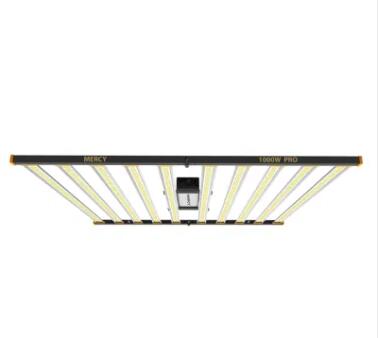How do LED grow lights work to support plant growth
2023-10-30
LED (Light Emitting Diode) grow lights work by providing plants with the specific wavelengths of light required for photosynthesis and various growth stages. Here's how LED grow lights support plant growth:
1. Light Spectrum: LED grow lights are designed to emit light in specific wavelengths across the visible and, in some cases, non-visible spectrums. Plants use different parts of the light spectrum for different purposes. Key wavelengths include red (600-700 nm) and blue (400-500 nm), which are essential for photosynthesis.
2. Photosynthesis: Plants perform photosynthesis by capturing light energy through pigments like chlorophyll. LED grow lights provide the necessary light energy for photosynthesis, allowing plants to convert carbon dioxide and water into glucose (sugar) and oxygen.
3. Growth Stages: LED grow lights can be customized to provide the right balance of red and blue light for different growth stages. Blue light is crucial for vegetative growth, promoting leaf development and overall plant structure. Red light is essential for flowering and fruiting, stimulating the production of flowers and fruits.
4. Light Intensity: LED grow lights offer precise control over light intensity. By adjusting the light output, growers can meet the specific needs of their plants. For instance, during the seedling and vegetative stages, higher light intensities are often used to encourage rapid growth.
5. Energy Efficiency: LED grow lights are highly energy-efficient, converting a significant portion of electrical energy into usable light while emitting minimal heat. This energy efficiency ensures that plants receive more light for growth without the risk of heat stress or damage.
6. Reduced Heat Emission: Traditional lighting sources, like incandescent or high-intensity discharge (HID) lights, emit a substantial amount of heat, which can be detrimental to plants in indoor growing environments. LED grow lights produce much less heat, reducing the need for complex cooling systems and minimizing the risk of heat-related plant stress.
7. Customization: LED grow lights can be customized to provide a specific spectrum of light tailored to the needs of different plant species or growth conditions. This customization allows growers to optimize their lighting for maximum growth and yield.
8. Longevity: LED diodes have a longer lifespan compared to traditional bulbs, reducing maintenance and replacement costs. This longevity ensures consistent light quality for plant growth over an extended period.
9. Uniform Lighting: LED grow lights can be designed to provide uniform lighting across the entire growing area, ensuring that all plants receive an equal share of light for balanced growth.
10. Reduced Environmental Impact: The energy efficiency of LED grow lights leads to reduced energy consumption and a smaller carbon footprint, making them more environmentally friendly.
Overall, LED grow lights support plant growth by providing the right light spectrum, intensity, and control for optimal photosynthesis, growth, and development. Their efficiency, longevity, and versatility make them a popular choice for indoor gardening, horticulture, and controlled-environment agriculture.



